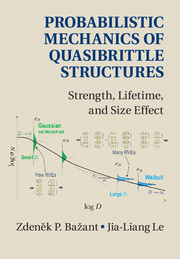Refine search
Actions for selected content:
2643 results in Civil and geotechnical engineering
14 - Engineering of Tidal Inlets
-
- Book:
- Tidal Inlets
- Published online:
- 04 July 2017
- Print publication:
- 22 June 2017, pp 152-160
-
- Chapter
- Export citation
13 - River Flow and Entrance Stability
-
- Book:
- Tidal Inlets
- Published online:
- 04 July 2017
- Print publication:
- 22 June 2017, pp 139-151
-
- Chapter
- Export citation
11 - Morphodynamic Modeling of Tidal Inlets Using a Process-Based Simulation Model
-
- Book:
- Tidal Inlets
- Published online:
- 04 July 2017
- Print publication:
- 22 June 2017, pp 110-119
-
- Chapter
- Export citation
2 - Geomorphology
-
- Book:
- Tidal Inlets
- Published online:
- 04 July 2017
- Print publication:
- 22 June 2017, pp 6-12
-
- Chapter
- Export citation
8 - Cross-Sectional Stability of a Single Inlet System
-
- Book:
- Tidal Inlets
- Published online:
- 04 July 2017
- Print publication:
- 22 June 2017, pp 75-85
-
- Chapter
- Export citation
Index
-
- Book:
- Tidal Inlets
- Published online:
- 04 July 2017
- Print publication:
- 22 June 2017, pp 172-174
-
- Chapter
- Export citation
12 - Morphodynamic Modeling of Tidal Inlets Using an Empirical Model
-
- Book:
- Tidal Inlets
- Published online:
- 04 July 2017
- Print publication:
- 22 June 2017, pp 120-138
-
- Chapter
- Export citation
Contents
-
- Book:
- Tidal Inlets
- Published online:
- 04 July 2017
- Print publication:
- 22 June 2017, pp v-x
-
- Chapter
- Export citation
Preface
-
- Book:
- Tidal Inlets
- Published online:
- 04 July 2017
- Print publication:
- 22 June 2017, pp xi-xii
-
- Chapter
- Export citation
7 - Tidal Inlet Hydrodynamics; Including Depth Variations with Tidal Stage
-
- Book:
- Tidal Inlets
- Published online:
- 04 July 2017
- Print publication:
- 22 June 2017, pp 61-74
-
- Chapter
- Export citation
1 - Introduction
-
- Book:
- Tidal Inlets
- Published online:
- 04 July 2017
- Print publication:
- 22 June 2017, pp 1-5
-
- Chapter
- Export citation
6 - Tidal Inlet Hydrodynamics; Excluding Depth Variations with Tidal Stage
-
- Book:
- Tidal Inlets
- Published online:
- 04 July 2017
- Print publication:
- 22 June 2017, pp 44-60
-
- Chapter
- Export citation
9 - Cross-Sectional Stability of a Double Inlet System, Assuming a Uniformly Varying Basin Water Level
-
- Book:
- Tidal Inlets
- Published online:
- 04 July 2017
- Print publication:
- 22 June 2017, pp 86-99
-
- Chapter
- Export citation
4 - Sand Transport and Sand Bypassing at Selected Inlets
-
- Book:
- Tidal Inlets
- Published online:
- 04 July 2017
- Print publication:
- 22 June 2017, pp 24-33
-
- Chapter
- Export citation
3 - Sand Transport Pathways
-
- Book:
- Tidal Inlets
- Published online:
- 04 July 2017
- Print publication:
- 22 June 2017, pp 13-23
-
- Chapter
- Export citation
5 - Empirical Relationships
-
- Book:
- Tidal Inlets
- Published online:
- 04 July 2017
- Print publication:
- 22 June 2017, pp 34-43
-
- Chapter
- Export citation
Frontmatter
-
- Book:
- Tidal Inlets
- Published online:
- 04 July 2017
- Print publication:
- 22 June 2017, pp i-iv
-
- Chapter
- Export citation
References
-
- Book:
- Tidal Inlets
- Published online:
- 04 July 2017
- Print publication:
- 22 June 2017, pp 161-171
-
- Chapter
- Export citation

Probabilistic Mechanics of Quasibrittle Structures
- Strength, Lifetime, and Size Effect
-
- Published online:
- 14 June 2017
- Print publication:
- 25 May 2017
12 - Crack Length Effect on Scaling of Structural Strength and Type 1 to 2 Transition
-
- Book:
- Probabilistic Mechanics of Quasibrittle Structures
- Published online:
- 14 June 2017
- Print publication:
- 25 May 2017, pp 210-217
-
- Chapter
- Export citation
